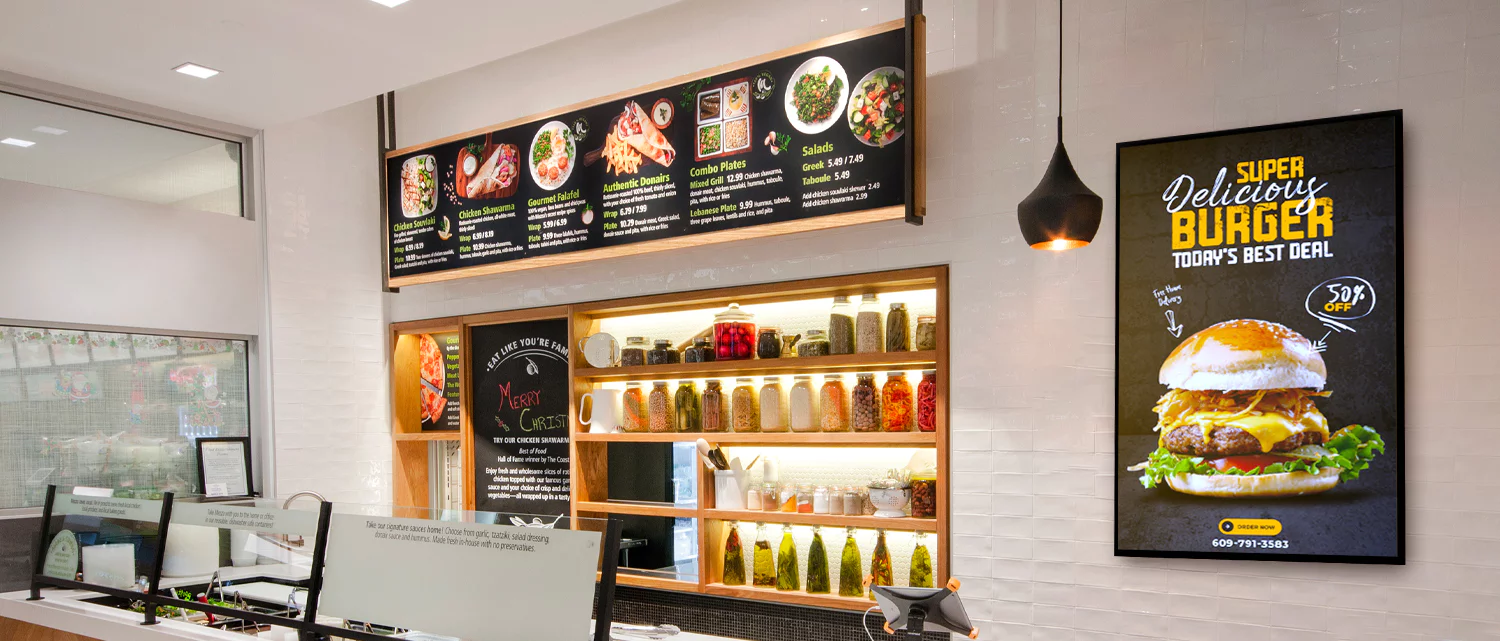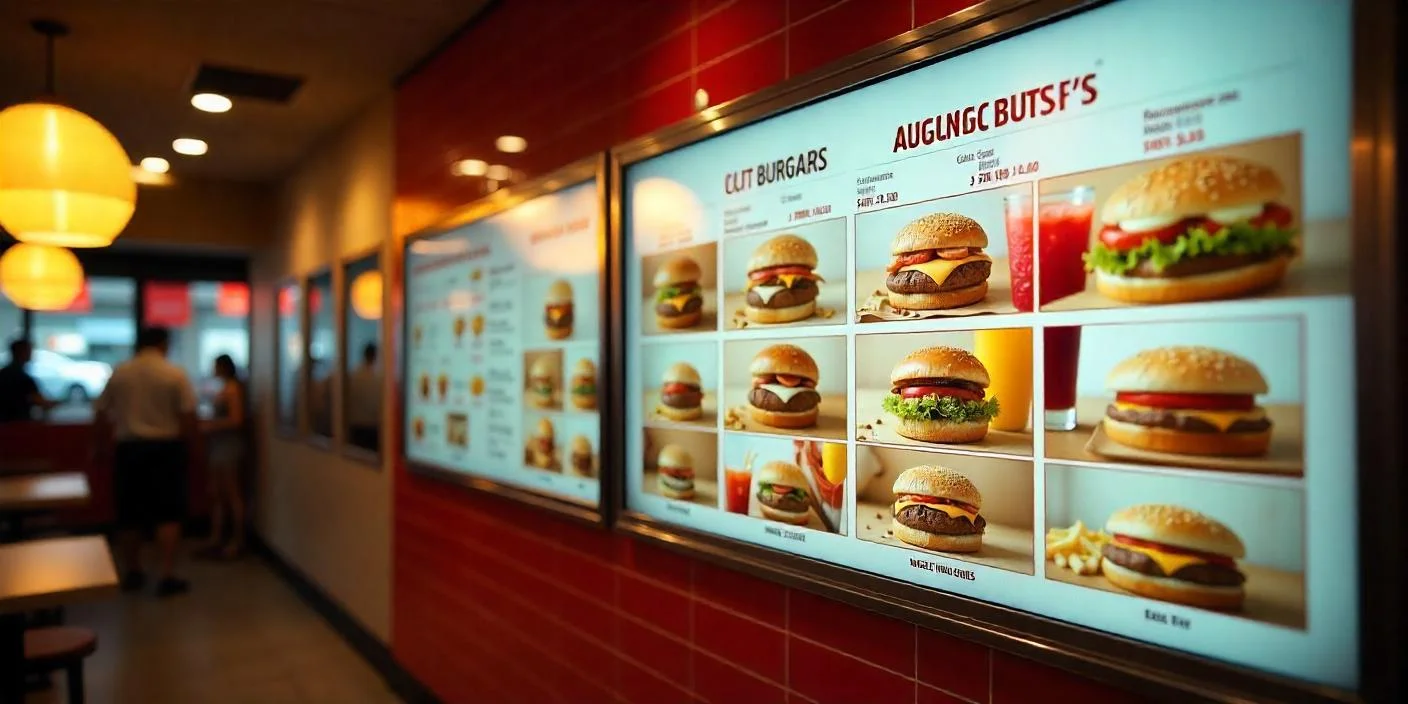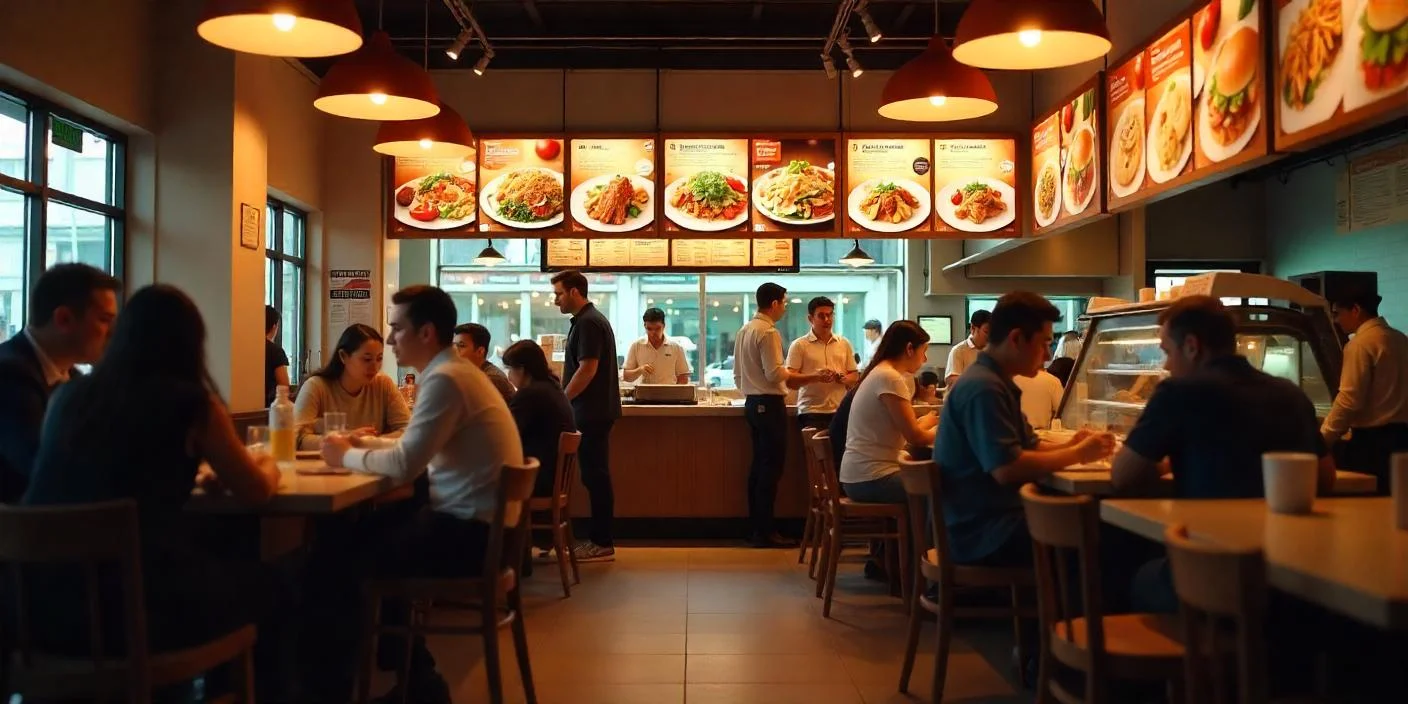The Evolution of Restaurant Menus
Restaurants are part of digital industrial transformation as they transition from paper menus to digital menu boards which show current information and eye-catching visuals and better serve their customers. Digital signage restaurant menus enhance operational efficiency and generate better revenue while improving customer satisfaction in QSRs cafés and drive-thru locations.
Businesses of all sizes across the world choose superior digital signage menu systems to update their presentation methods. The following guide explains digital menu signage technology together with its main benefits and operational transformation capabilities for restaurant businesses.
What is a Digital Signage Menu?
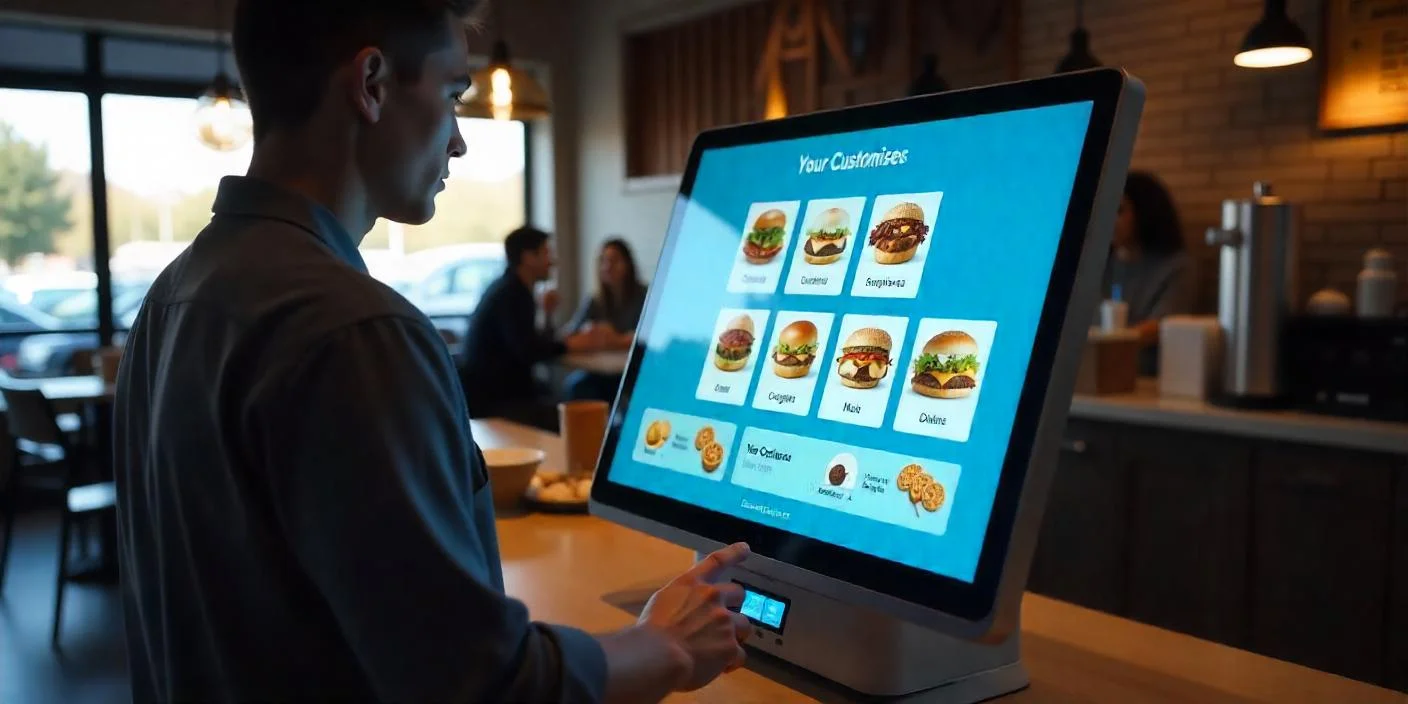
Digital signage menu boards present electronic displays that display menu items together with pricing promotions and multimedia content. The digital signage menu board software eliminates the need for repetitive printed menu reprinting because it allows businesses to perform instant updates which guarantee accurate information alongside consistent presentation and quick reaction to customer preferences.
How Digital Signage Menus Differ from Traditional Menus
| Feature | Traditional Menu | Digital Signage Menu |
| Update Speed | Requires reprinting, delays in reflecting changes | Instant updates via digital signage menu board software |
| Visual Appeal | Static text and images | Dynamic content (videos, animations, high-resolution images) |
| Cost Over Time | High due to frequent reprinting | One-time investment with long-term savings |
| Customer Engagement | Passive viewing | Interactive and engaging |
Investing in digital signage restaurant menu solutions lets businesses easily promote limited-time offers together with seasonal specials and real-time pricing since it saves them from traditional printing workloads.
Key Components of a Digital Signage Menu System
Three fundamental elements make up a complete digital signage menu system.
1. Display Screens
Digital menu board effectiveness depends directly on the quality of its display screen. Common types include:
- LED Screens – The digital signage menu system utilizes LED Screens because they deliver bright images with energy efficiency and work effectively inside and outside restaurant spaces.
- LCD Screens – Indoor restaurant environments benefit most from LCD Screens because they deliver a clear visual presentation while remaining cost-efficient.
- Touchscreen Displays – The touchscreen displays feature lets customers engage with the system through menu browsing order customization and self-service request functions.
2. Digital Signage Menu Board Software
A digital signage menu system relies on software to provide the following business capabilities:
- The system allows distant remote management of menu content through its cloud-based dashboard interface.
- The software allows users to set automatic content updates for breakfast lunch and dinner periods.
- The system can link directly to POS (Point of Sale) platforms to conduct immediate price updates.
- The system allows users to present multimedia elements which include promotional videos, special offers and animated content.
3. Media Players and Connectivity
Digital signage menu boards receive their software updates through media players which serve as the connection to the software platform. Restaurants can choose between:
- Cloud-Based Solutions – Enable remote management and automatic updates.
- On-Premise Solutions – Local security and stable operations are available through On-Premise Solutions which do not need internet connectivity.
Drive-thru digital menu setups need industrial-grade hardware components because they must handle weather elements and deliver superior visibility to customers.
Advantages of Digital Signage Menus
1. Real-Time Menu Updates and Pricing Adjustments
The digital signage menu board software enables restaurants to perform instant price changes and update specials or remove unavailable items which improves the menu clarity for customers and keeps their information accurate.
2. Enhanced Visual Appeal with High-Resolution Content
- High-definition food images should be displayed to draw customers in.
- The system employs animated displays to promote popular choices and promotional items.
- Visitors can establish more trust in food preparation by watching video demonstrations.
3. Cost Savings from Reduced Printing Expenses
Companies that adopt digital signage menu templates eliminate all menu printing expenses during updates and redesigns which leads to substantial financial savings over time.
4. Faster Service and Reduced Wait Times
Through clear menu presentation digital menus help customers decide quickly which selections they prefer thus improving both the speed of serving their order and business efficiency.
5. Increased Customer Engagement
- Digital menu boards should include QR codes which direct customers to their loyalty programs and promotional offers.
- The display of nutritional breakdown together with allergen warnings services customers who seek health information.
Designing an Effective Digital Menu
1. Choosing the Right Fonts for Readability
This is why legibility is very important when it comes to the use of the best digital menu boards. Optimal font choices include:
- Sans-serif fonts (e.g., Arial, Roboto) for a modern and clean look.
- Highlighted type for the items and offers that are in focus.
2. Strategic Use of Colors and Imagery
It is well understood that color influences people’s buying decisions in some way:
- Red and Yellow – This color combination is particularly effective in food industries because it triggers the hunger feeling and impulsive buying behavior.
- Green – Represents freshness and healthy eating options.
- Black and Gold – Establishes a high-end eating environment.
3. Highlighting High-Margin Items with a Hierarchical Structure
- Ensure that the price of the most profitable meals is placed in the center or at the top of the menu.
- When recommending combo meals or any other additional products, incorporate animations.
The impact of digital menus on consumers’ behavior
1. The Psychology of Visuals
In fact, people are able to grasp visuals 60 thousand times faster than texts. An effectively designed digital signage menu board uses high quality graphic images and videos to draw the attention of the customers and influence their purchase decisions.
2. Creating a Sense of Urgency
- Show time counters for the certain offers that are valid for a limited time only.
- Flashing animations should be used where there is an element of time-sensitivity as regards the discounts being offered.
3. Upselling and Cross-Selling Strategies
- Offer suggestions for better meals through use of notice messages.
- An ordered dish suggestion (e.g., “Take care of your burger with a side of special fries!”).
________________________________________
Industry Applications for Digital Signage Menus
1. Quick Service Restaurants (QSRs)
- Enhance productivity with digital signage menu services for drive thru.
- Implement the functionality to switch between breakfast, lunch, and dinner menus.
2. Cafés and Coffee Shops
- Feature seasonal drinks and promotions.
- Increase the customer base through use of coupons and other promotional offers.
3. Hotel and Resort Dining
- Display multilingual menu options.
- Ensure that the rooms’ ordering system connects with the restaurant.
Future Trends in Digital Menu Technology
1. AI-Powered Personalized Menus
Intelligent menu boards will be used to display meals that a customer is most likely to order using artificial intelligence.
2. Augmented Reality (AR) Menus
The future developments of the digital menu systems in restaurants may also include the 3D images of the foods to be ordered.
3. Eco-Friendly Digital Displays
Sustainable drive-through digital signage menu boards will have low energy consuming LED screens in order to minimize their impact on the environment.
Transform Your Restaurant with a Digital Signage Menu
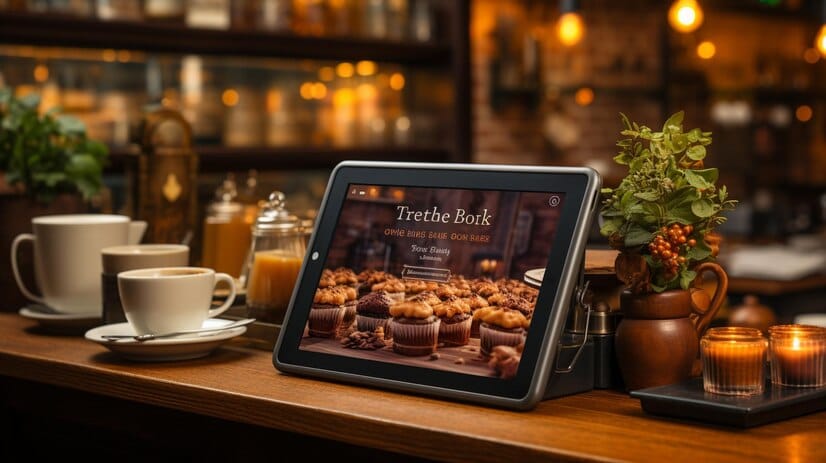
Embarking on the digital signage menu revolution represents an empowering choice that enables restaurants to maximize efficiency and boost sales impact and supports sustained customer relationships. Your establishment will achieve long-term success through the right digital menu signage system regardless of being a café, QSR or drive-through digital menu.
Upgrade your restaurant’s digital menu board today and unlock unlimited potential for growth and customer satisfaction!
FAQs About Digital Signage Menus
What type of digital signage menu system suits the needs of small restaurants best?
A digital menu template system in cloud-based format represents an excellent solution for small businesses because it offers straightforward management and adaptability features.
Can I use digital signage for a drive-thru menu?
Drive-thru digital menu boards improve business visibility by cutting down waiting time and delivering both higher efficiency and excellent customer satisfaction.
How often should I update my digital menu?
The content needs regular updates to show new prices and promotional offers and seasonal food specials, so it remains fresh and appropriate.

